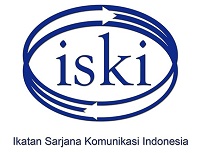Relationship between Gen Z’s Personality and Motivations with TikTok Usage During Pandemic
DOI:
https://doi.org/10.29313/mediator.v16i2.2665Keywords:
personality, motivation, tiktok, social media, media useAbstract
The COVID-19 pandemic has significantly reshaped how people communicate due to restrictions on direct interaction, impacting both mental and physical well-being. Social media, particularly TikTok, gained widespread attention during the pandemic, notably among Gen Z, offering online expression and entertainment to compensate for limited in-person interaction. However, the interplay between Gen Z's personality traits, motivations, and TikTok usage remains relatively unexplored. In order to fill the gap, this research investigates how Gen Z's personality traits influence TikTok media usage, considering the mediating role of motivations during the pandemic. Employing the Uses and Gratifications framework and the Big Five Personality factors, the research collected data from 400 Gen Z participants in the Jabodetabek and then analyzed by Path Analysis. The findings show that personality traits do influence TikTok usage, mediated by motivations for information seeking and sharing, social interaction, escapism and relaxation, as well as norm and trend following. In this research, the classification of the Big Five Personalities was different because the research only found four types of personality in Gen Z: extraversion, conscientiousness and neuroticism, agreeableness, and openness. Gen Z's motivation for using TikTok during the COVID-19 pandemic differs for each personality.
References
Abdullatif, H., & Velázquez-Iturbide, J. Á. (2020). Relationship between motivations, personality traits and intention to continue using MOOCs. Education and Information Technologies, 25(5), 4417–4435. https://doi.org/10.1007/s10639-020-10161-z
Al-Qirim, N., Rouibah, K., Tarhini, A., Serhani, M. A., Yammahi, A. R., & Yammahi, M. A. (2018). Towards a personality understanding of information technology students and their IT learning in UAE university. Education and Information Technologies, 23(1), 29–40. https://doi.org/10.1007/s10639-017-9578-1
Allport, G. . (1961). Pattern and growth in personality. Holt Rinehart and Winston.
Atroszko, P., Balcerowska, J. M., Bereznowski, P., Biernatowska, A., Pallesen, S., & Schou Andreassen, C. (2018). Facebook addiction among Polish undergraduate students: Validity of measurement and relationship with personality and well-being. Computers in Human Behavior, 85, 329–338. https://doi.org/10.1016/j.chb.2018.04.001
Barrick, M. R., & Mount, M. K. (1991). The Big Five Personality Dimensions And Job Performance: A Meta-Analysis. Personnel Psychology, 44(1), 1–26. https://doi.org/10.1111/j.1744-6570.1991.tb00688.x
Brailovskaia, J., & Margraf, J. (2018). What does media use reveal about personality and mental health? An exploratory investigation among German students. PLOS ONE, 13(1), e0191810--e0191810. https://doi.org/10.1371/journal.pone.0191810
Brooks, S. (2015). Does personal social media usage affect efficiency and well-being? Computers in Human Behavior, 46, 26–37. https://doi.org/10.1016/j.chb.2014.12.053
Bunker, C., & Kwan, V. S. Y. (2021). Do the offline and social media Big Five have the same dimensional structure, mean levels, and predictive validity of social media outcomes? Cyberpsychology: Journal of Psychosocial Research on Cyberspace, 15(4). https://doi.org/10.5817/CP2021-4-8
Caplan, S. E. (2003). Preference for Online Social Interaction. Communication Research, 30(6), 625–648. https://doi.org/10.1177/0093650203257842
Chen, M., & Peng, A. Y. (2022). Why Do People Choose Different Social Media Platforms? Linking Use Motives With Social Media Affordances and Personalities. Social Science Computer Review, 089443932110491--089443932110491. https://doi.org/10.1177/08944393211049120
Clement, J. (2020). Number of U.S. TikTok users 2024. Retrieved October 18, 2022. In statista. https://www.statista.com/statistics/1100836/number-of-ustiktok-users/
Correa, T., Hinsley, A. W., & de Zúñiga, H. G. (2010). Who interacts on the Web?: The intersection of users’ personality and social media use. Computers in Human Behavior, 26(2), 247–253. https://doi.org/10.1016/j.chb.2009.09.003
Cortese, A. J. (2019). QuestMobile release 2019 short-video report. . In pandaily. https://pandaily.com/questmobile-releases-2019-short-video-report/
Costa, P. T., & McCrae, R. R. (1992). The Five-Factor Model of Personality and Its Relevance to Personality Disorders. Journal of Personality Disorders, 6(4), 343–359. https://doi.org/10.1521/pedi.1992.6.4.343
Creative Research Systems. (2022). Confidence Level, Confidence Interval, Sample Size, Population Size, Relevant Population - Creative Research Systems. In Creative Research Systems. https://www.surveysystem.com/sscalc.htm.
Devaraj, S., Easley, R. F., & Crant, J. M. (2008). How Does Personality Matter? Relating the Five-Factor Model to Technology Acceptance and Use. Information Systems Research, 19(1), 93–105. https://doi.org/10.1287/isre.1070.0153
Feldkamp, J. (2021). The Rise of TikTok: The Evolution of a Social Media Platform During COVID-19 (pp. 73–85). Springer, Cham. https://doi.org/10.1007/978-3-030-66611-8_6
Gil de Zúñiga, H., Diehl, T., Huber, B., & Liu, J. (2017). Personality Traits and Social Media Use in 20 Countries: How Personality Relates to Frequency of Social Media Use, Social Media News Use, and Social Media Use for Social Interaction. Cyberpsychology, Behavior, and Social Networking, 20(9), 540–552. https://doi.org/10.1089/cyber.2017.0295
Gosling, S. D., Augustine, A. A., Vazire, S., Holtzman, N., & Gaddis, S. (2011). Manifestations of Personality in Online Social Networks: Self-Reported Facebook-Related Behaviors and Observable Profile Information. Cyberpsychology, Behavior, and Social Networking, 14(9), 483–488. https://doi.org/10.1089/cyber.2010.0087
Griffin, E. (2012). A First look at communication theory (3rd ed.). McGraw-Hill Companies.
Griffin, E. (2018). A First Look At Communication Theory Tenth Edition (10th ed.). McGraw Hill Education.
Guadagno, R. E., Okdie, B. M., & Eno, C. A. (2008). Who blogs? Personality predictors of blogging. Computers in Human Behavior, 24(5), 1993–2004. https://doi.org/10.1016/j.chb.2007.09.001
Hamutoglu, N. B., Topal, M., & Gezgin, D. M. (2020). Investigating Direct and Indirect Effects of Social Media Addiction, Social Media Usage and Personality Traits on FOMO. International Journal of Progressive Education, 16(2), 248–261. https://doi.org/10.29329/ijpe.2020.241.17
Institute, I. D. N. R., & IDN Research Institute. (2022). Indonesia Gen Z Report 2022, Understanding & Uncovering The Behaviour, Challenges, & Opportunities.
Jarman, H. K., Marques, M. D., McLean, S. A., Slater, A., & Paxton, S. J. (2021). Motivations for Social Media Use: Associations with Social Media Engagement and Body Satisfaction and Well-Being among Adolescents. Journal of Youth and Adolescence, 50(12), 2279–2293. https://doi.org/10.1007/s10964-020-01390-z
Katz, E., Blumler, J. G., & Gurevitch, M. (1973). Uses and gratifications research. Public Opinion Quarterly, 37(4), 509–523. https://doi.org/10.1086/268109
Kemp, S. (2022). Digital 2022: Indonesia DataReportal. https://datareportal.com/reports/digital-2022-indonesia
Kusumalestari, R. R., Satriani, A., Permatasari, A. N., Anjani, M., & Nadifah, N. N. (2021). Gen Z’s Reception of Covid-19 Information on Digital Media. Mediator: Jurnal Komunikasi, 14(2), 157–167. https://doi.org/10.29313/mediator.v14i2.8387
Lee, E., Lee, J.-A., Moon, J. H., & Sung, Y. (2015). Pictures Speak Louder than Words: Motivations for Using Instagram. Cyberpsychology, Behavior, and Social Networking, 18(9), 552–556. https://doi.org/10.1089/cyber.2015.0157
Literat, I., & Kligler-Vilenchik, N. (2019). Youth collective political expression on social media: The role of affordances and memetic dimensions for voicing political views. New Media & Society, 21(9), 1988–2009. https://doi.org/10.1177/1461444819837571
Lleras, C. (2005). Path Analysis. Encyclopedia of Social Measurement, 25–30. https://doi.org/10.1016/B0-12-369398-5/00483-7
Marengo, D., Angelo Fabris, M., Longobardi, C., & Settanni, M. (2022). Smartphone and social media use contributed to individual tendencies towards social media addiction in Italian adolescents during the COVID-19 pandemic. Addictive Behaviors, 126, 107204. https://doi.org/10.1016/j.addbeh.2021.107204
Marta, R. F., Kurniasari, N., & Salim, M. (2023). Anxiety by COVID-19 Death Reports : Explanatory Study among Jakarta ’ s Muslim Young Adults. Mediator: Jurnal Komunikasi, 16(June), 156–169. https://doi.org/https://doi.org/10.29313/mediator.v16i1.2215
Masciantonio, A., Bourguignon, D., Bouchat, P., Balty, M., & Rimé, B. (2021). Don’t put all social network sites in one basket: Facebook, Instagram, Twitter, TikTok, and their relations with well-being during the COVID-19 pandemic. PLOS ONE, 16(3), e0248384--e0248384. https://doi.org/10.1371/journal.pone.0248384
McCrae, R. R., & John, O. P. (1992). An Introduction to the Five-Factor Model and Its Applications. Journal of Personality, 60(2), 175–215. https://doi.org/10.1111/j.1467-6494.1992.tb00970.x
McElroy, Hendrickson, Townsend, & DeMarie. (2007). Dispositional Factors in Internet Use: Personality versus Cognitive Style. MIS Quarterly, 31(4), 809. https://doi.org/10.2307/25148821
Meng, K. S., & Leung, L. (2021). Factors influencing TikTok engagement behaviors in China: An examination of gratifications sought, narcissism, and the Big Five personality traits. Telecommunications Policy, 45(7), 102172. https://doi.org/10.1016/j.telpol.2021.102172
Moore, K., & McElroy, J. C. (2012). The influence of personality on Facebook usage, wall postings, and regret. Computers in Human Behavior, 28(1), 267–274. https://doi.org/10.1016/j.chb.2011.09.009
Oosterhoff, B., Palmer, C. A., Wilson, J., & Shook, N. (2020). Adolescents’ Motivations to Engage in Social Distancing During the COVID-19 Pandemic: Associations With Mental and Social Health. Journal of Adolescent Health, 67(2), 179–185. https://doi.org/10.1016/j.jadohealth.2020.05.004
Palmgreen, P., & Rayburn, J. D. D. (1979). Uses and Gratifications and Exposure To Public Television. Communication Research, 6(2), 155–179. https://doi.org/10.1177/009365027900600203
Papacharissi, Z., & Rubin, A. M. (2000). Predictors of Internet Use. Journal of Broadcasting & Electronic Media, 44(2), 175–196. https://doi.org/10.1207/s15506878jobem4402_2
Perugini, M. L. L., & Solano, A. C. (2021). Normal and Maladaptive Personality Traits as Predictors of Motives for Social Media Use and Its Effects on Well-Being. Psychological Reports, 124(3), 1070–1092. https://doi.org/10.1177/0033294120922495
Ross, C., Orr, E. S., Sisic, M., Arseneault, J. M., Simmering, M. G., & Orr, R. R. (2009). Personality and motivations associated with Facebook use. Computers in Human Behavior, 25(2), 578–586. https://doi.org/10.1016/j.chb.2008.12.024
Rubin, A. (2002). The uses-and-gratifications perspective of media effects. In Media effects: Advances in theory and research, 2nd ed. (pp. 525–548). Lawrence Erlbaum Associates Publishers.
Rubin, A., & Perse, E. (1987). Audience Activity and Television News Gratifications. Communication Research, 14(1), 58–84. https://doi.org/10.1177/009365087014001004
Ruggiero, T. E. (2000). Uses and Gratifications Theory in the 21st Century. Mass Communication and Society, 3(1), 3–37. https://doi.org/10.1207/S15327825MCS0301_02
Schwieger, D., & Ladwig, C. (2018). Reaching and Retaining the Next Generation: Adapting to the Expectations of Gen Z in the Classroom. Information Systems Education Journal, 16, 45–54. https://api.semanticscholar.org/CorpusID:197768868
Seidman, G. (2013). Self-presentation and belonging on Facebook: How personality influences social media use and motivations. Personality and Individual Differences, 54(3), 402–407. https://doi.org/10.1016/j.paid.2012.10.009
Shao, G. (2009). Understanding the appeal of user generated media: a uses and gratification perspective. Internet Research, 19(1), 7–25. https://doi.org/10.1108/10662240910927795
Stahl, C. C., & Literat, I. (2023). #Gen Z on TikTok: the collective online self-Portrait of the social media generation. Journal of Youth Studies, 26(7), 925–946. https://doi.org/10.1080/13676261.2022.2053671
Statista. (2022). Global TikTok user age and gender distribution 2022.
Sunuantari, M., Mandjusri, A., Gunawan, I., & Farhan, R. M. (2023). The Attractiveness of TikTok Live Shopping to User Emotional Satisfaction. Mediator: Jurnal Komunikasi, 16(1). https://doi.org/https://doi.org/10.29313/mediator.v16i1.2176
Wang, J.-L., Jackson, L. A., Zhang, D.-J., & Su, Z.-Q. (2012). The relationships among the Big Five Personality factors, self-esteem, narcissism, and sensation-seeking to Chinese University students’ uses of social networking sites (SNSs). Computers in Human Behavior, 28(6), 2313–2319. https://doi.org/10.1016/j.chb.2012.07.001
Wilson, K., Fornasier, S., & White, K. M. (2010). Psychological Predictors of Young Adults’ Use of Social Networking Sites. Cyberpsychology, Behavior, and Social Networking, 13(2), 173–177. https://doi.org/10.1089/cyber.2009.0094
Downloads
Published
Issue
Section
License
Copyright (c) 2023 Risa Krisadhi, Dede Kurniyawan, Dewi Nandini Aryawan, Hanni Shabrina Johan, Muhammad Ikbar Ishomi

This work is licensed under a Creative Commons Attribution-ShareAlike 4.0 International License.























